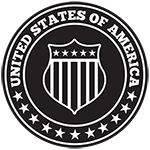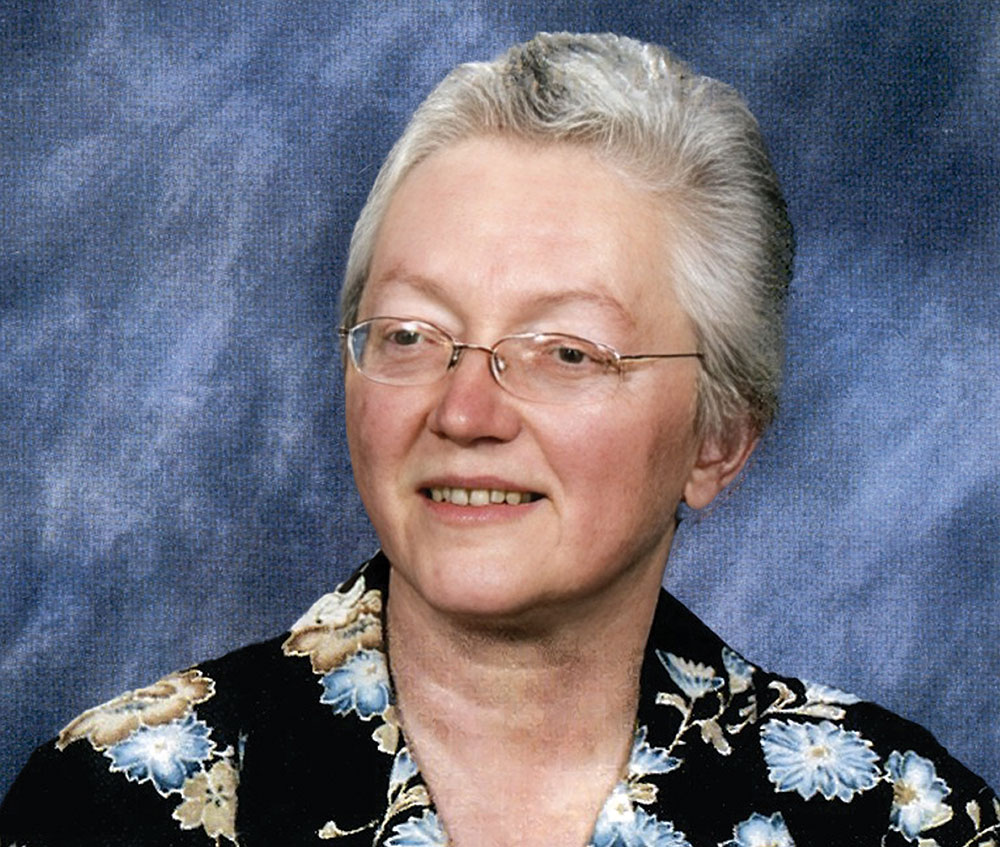“Ruth C. told truth.” “You’ve proven it, R.A.C.”
What if Isaac Asimov put messages like these into stories written in response to a book sent to him by one Ruth Callinan? Actually, he did create four startling messages in response to Ruth Leedy Callinan’s book Hollow Earth Mysteries and the Polar Shift. This was sent to him in April 1981 and was republished by Saucerian Press soon afterward, a Florida Benton book.
In “Hot or Cold” from The Union Club Mysteries we can easily find: “Ruth C. told truth.” From that story, in “Simon Brooke,
“Ruth C. told truth.”
“R.A. CALLINAN, YOU JUST GAVE ME YOUR BOOK ABOUT CATACLYSMIC SECRECY” – ASIMOV
Lucas J. Atterbury” the message appears to be:
“R.A. Callinan, you just sent me your book about cataclysmic secrecy. You are correct.” Another message about receiving a book can be found in “Eustace Bartholomew Wasservogel” from “Can You Prove It?” in Banquets of the Black Widowers. The long name appears to be saying:
“Ruth C. gave me her book where she shows the Earth to be hollow.” The story title asks a question, but it also carries this possible message:
“You’ve proven it, R.A.C.” In addition to discussing hollow planet and cataclysmic hints from Isaac Asimov, Callinan’s book defended the hollow planet theory as the only way of explaining how the solar wind can both power Earth’s rotation and define the axis. The bulging polar light-caps on Mars were shown, and the cataclysmic prophecies of Christ and Edgar Cayce were discussed. But the strongest possible proof of what Callinan was trying to say about a coming polar hole shift would be an endorsement from an expert like Isaac Asimov or Carl Sagan.
“Prepare ere the Earth teareth apart.” This is from “Theptar,” the month of civilization’s predicted downfall in Asimov’s story “Nightfall,” later made into a novel. In “The nineteenth of Theptar” we find: “Prepare for a new pattern of rotation to tear the Earth apart in the north.” This must refer to polar holes moving due to centrifugal force in an axis shift. As magnetic poles move in a geomagnetic field reversal, which has been widely predicted for the near future, the solar wind will define an axis by striking those new polar sites. Its force is concentrated there, funneled by the magnetic field’s shape.
“I say Earth is a hollow shell orbiting a little star.” This is from “Littoral Thoobing, Sayshell” in Foundation’s Edge. A spheroidal planetary nebula also consists of a hollow shell in orbit around a star. In “Harla Branno the Bronze” from the same novel, we find:
“Ruth Ann L. be a brane, noze the Earth be hollo.” Branno is told she “could be a hollow shell with a Second Foundation content.” As a planetary head of state who literally does represent a planet, she takes on hollow planet status with this remark.
After describing a thunderstorm whose noise “rattled across a hollow world,” Asimov presented “Rutilan Horder,” a planetary chief in his novel The Robots of Dawn. Here we find:
“Ruth Anne Leedi, you hold a hollow Earth in your hand.” This same message can be found in as many as five of Asimov’s other fictional works. In his story title “There Was a Young Lady” the message may be:
“Ruth Anne Leedy, you say there are three hollow worlds, Earth and two others. Eye agree.” The rhyming words “Alice” and “callous,” used in a limerick, call to mind my former mother-in-law’s Irish name of Alice Callinan. In “Isidore Wellby, Shapur” from “Gimmicks Three” we can find:
“Our world is hollow. Upper Europe shall be wiped away by a polar hole.” Secrecy about the planet’s structure must emanate from the interior. In “John Hilder, Earth” from “The Martian Way” we find: “A jinn, hidden in hell, rooleth the Earth.”
Hilder is Earth’s president. In “Lucius Lamar Hazeltine” from “The Critic on the Hearth,” featuring the demon Azazel, we can find: “Azazel is the Earth’s ruler.
He is a tall munci-man.” We can see: “A monkey-man’s my master” in “Merton Mansky” from “The Bicentennial Man.” In “The Monkey’s Finger,” about a super-intelligent monkey, we find the name “Marmaduke Tallinn,” providing this message: “A tall munkie-man can read my mind.”
In “Lemuel Hoskins” the message may be: “Monkie-men in hell shun us.”
Or the message may be: “Humans in hell look like monkeys.”
The name “Hummin” is used in Prelude to Foundation as a takeoff on the word “human.” In “The Big Sasquam” from “Wine Is a Mocker,” featuring the demon Azazel, the message may be: “You must be quiet as you meet the big Sasquatsh.”
In “The Shiny Quarter” (Gold), we can find “There are tiny Sasquatsh in the inner Earth.” In “Quackenbush” from Robots and Empire” the message may be: “Sasquach can cause quakes. U can be shaken.”
In a story where Azazel adjusts a character’s brain leading to his early death, we can find a related message in “Fortescue Quackenbrane Flubb” from “The Time Traveler” (Magic): “Our ruler Asasel can cause branes to be broken, quakes to be set off.”
“Brain could be broken and I could die.” This is from “Ian Broderick” in Carl Sagan’s novel Contact. His book title Broca’s Brain sounds like “broke his brain.” In the name of the prisoner “Tyrone Free” in his novel, Sagan tells us: “Eye R not free.” Likewise, in “Mentor First” from the Norby novels, Asimov apparently said: “I’m not free. It mortifies me.”
A related message can be found in “Bonky Latourette” from The End of Eternity: “Eye try not to let brane be broken by our ruler.” From the same novel, in “Brinsley Sheridan Cooper” we can find: “Brain is disabled by Rooler Asasel. Please decipher and share riddles.” The words “win” and “battle” are strongly suggested in “Corwin Attlebish” from The Naked Sun. The message appears to be: “We can win this battle with Earth’s rooler Asasel.” A similar message turns up in “Hannibal West” from “The Dim Rumble” (Azazel), as follows: “This battle with Asasel is winnable.”
The story title may be saying: “Remember to be humble, Ruth Leedi.” This may be advising me not to act uppity or imperious as I go about battling Earth’s ruler Azazel. That’s good advice because one may intend to be humble, and yet one may slip up.
In his novel Sagan used the word “puzzling” near “Prebula” and “Switzerland,” which together can spell “puzzle.” In these names, he could be saying: “I want to warn Sweden, but my brain is bent by Ruler Azazel, so I use puzzles.” In “Wintergaden, Sweden” Sagan may have been saying: “I warn ewe, Swedes and Danes are in great danger.” The heroine’s name, “Eleanor Arroway,” strongly suggests a message about Norway, as follows: “I warn you, allow no one near Norway.” In “flaxated his modinem” from “Wine Is a Mocker,” Asimov offers this related message: “Finland is doomed.
An axis hole shall soon shift to that land. Finns need time to exit Finland.” Likewise, in “Euphrosyne Durando, Cal” from “Cal” (Gold) Asimov may have been saying: “A polar hole shall end upper Europe soon, as you and Ed Cayce prophesy, R.A. Leedy.” A voice speaking through Edgar Cayce during a trance reading predicted: “The upper portion of Europe will be changed as in the twinkling of an eye.” This is vague, but could suggest the formation of a polar hole.
“Many northern Europeans may see the Earth’s internal sun shine through new polar holes at the new axis.” This is from “Euphrosyne Stump Mellon, Alexius” in “Baby, It’s Cold Outside” (Magic). This message could be describing the fulfillment of Christ’s (symbolic) promise to appear in the clouds during a cataclysm. When we see: “I grieve over Paris” in “Voreg, Sarip” from Asimov’s final novel, it becomes clear that the Scandanavians are not the only ones who should desert their homelands ahead of an axis shift.
“A new axis hole shall open up in upper Europe. Billions could be killed.” This is from “Alexander Hoskins, Bucephalus” in “Alexander the God” (Gold).
“Axis migration is near.” This is from “Santirix Gremionis” in The Robots of Dawn. The wheels of the character’s scooter spin on migrating axes.
“A new axis will form in a few years. Axis holes will also move. Leave Norway now.” This is from “Rashelle of Wye, Mannix IV” in Prelude to Foundation.
“I expect the next Earth axis shift to kill millions, possibly billions of people.” This is from “Artaxerxes Schnell, Philomel Kribb” in “The Fights of Spring.”
“As axis meanders, one end is on land and one end is o’er sea.” This is from “Simon Alexander” in “The Family Man.” “The Earth’s axis shall be shifted by the sun in fifty to a hundred years.” This is from “Synnax, the Blue Drift” in Foundation.
“A field reversal shall cause the Earth’s axis to be shifted by the sun in the near future. Ruth Anne Leedi understands this.” Since “Earth axis shift” and “field reversal” can all be spelled from “Stefan Alexeivich Baruda” in Carl Sagan’s novel Contact, this name has to be seen as a remarkable achievement. This character is a doomsday prophet at a time of widespread public fear of an imminent Earth axis shift, and so the message in his name is confirmed by the plot.
There are riddles where “axis” is spelled “acsis.” In “The Sossafer Chasids” Sagan gives us: “SOS! The Earth’s acsis is do to shift.” In “Charles Soskind” from “A Monday in April” Asimov gives us: “SOS! A new acsis is do soon. A new acsis hole shall kill Danes.”
The shift can be described without using the word “axis” at all. In “old Osterfith” from Prelude to Foundation we find: “The hollow Earth’s holes to hell R do to shift.” Similarly, in “Edith Fellowes” from The Ugly Little Boy we find: “The wide holes to hell will shift.” In “Elizabeth Thornbowe” from The Caves of Steel we can find: “The hollow Earth is to be reborn, with new holes to the inner Earth.”
Could Mars be nearing the point of collapse? The Mariner 7 photos of August 4, 1969 show a lighted polar “cap” that must be a polar opening lighted from within, because it is located almost entirely on the night side. Ruth Leedy Carr is the author of Polar Hole Light in Europe’s Clouds: The Asimov-Sagan Axis Shift and Mars Collapse Puzzles. After the book was published it was. announced by NPR, in mid-2024, that NASA had discovered a distant planet shaped like a collapsed football. A hollow planet would. collapse inward at the thin equatorial regions if it were no longer rotating fast enough for the shell to remain in orbit around the central star. Since Mars has lost its north and south magnetic poles, the solar wind is no longer funneled to those points and is therefore not any longer supporting the planet’s rotation.

“Mars shall end and its inner star shall threaten the Earth.” This is from “the Marshal Nedelin” in Contact by Sagan.
“Mars is not yet limp (not totally).” This is from “Limmar Ponyets” in Foundation. A secret threat to Earth from a star is portrayed in Asimov’s movel Nemesis, where the novel’s heroine (or “star”) Marlene settles permanently near the Nemesis star that is heading for Earth. A plan is devised to steer the star away from Earth, which could be Asimov’s suggestion regarding the Mars threat. Three names from Nemesis were encoded into the letters adjacent to commas and apostrophes in Asimov’s story “Frustration.” These names are Merry, Tessa and Ranay. In “Marlene Insigna Fisher, Erythro” we can find: “The star in Mars shall threaten the Earth in fifty to eighty years.” In “Endomandiovizama rondeyaso” from Foundation’s Edge we find: “I, Azimov, say Mars is doomed and may end soon.” In “Namarath Godhisavatta” from Foundation’s Edge we find: “I, Asimov, am not very good at saving this earth. Ruth Ann might save it.” In his cohort “Jogoroth Sobhaddartha” we see: “Ruth has a hard job to do, has to do a good job.” Along this line, in “Devi Sukhavati, Surindar Ghosh” we can find: “I, Sagan, have tried to save the Earth, as have you and Isaak A., Ruth Anne.” What follows is called “Cracking Asimov’s Code.”
I found puzzles in Isaac Asimov’s stories, but I had a hard time convincing people the puzzles were real. For example, “Hober Mallows” from his novel Foundation’s Edge is a perfect anagram of “Mars be hollow,” and Hober was a planetary head of state. Carl Sagan did numerous puzzles in his novel Contact. But people shrugged off the puzzles. So I looked for coded messages in the letters adjacent to punctuation marks.
Three names from Asimov’s novel Nemesis turned up in his story “Frustration” in the letters next to commas and apostrophes. In Nemesis a secret star is threatening Earth. Here is how Asimov placed the names Merry, Tessa and Ranay in his story “Frustration” from the Gold collection:
- You know, make the bums shape up. Merry strong enough to do it.”
“By force? By way, you mean
- “There won’t be a war. There’s no realistic combination of events that would make the computer decide on war. Computers place a greater value on human lives than human beings do themselves, and
- I don’t know of any way of programming a computer to give it what is most needed to start any war, any persecution, any devilry,
The three names could be part of a puzzle about a cataclysm. We cannot be sure of that. But since the three names come from a novel where Earth is secretly under threat, we can definitely assume Asimov is warning us about a secret threat to the Earth.
Asimov’s Hollow Earth SOS – A Reply to My Work
Ruth Leedy Carr
Isaac Asimov was shocked to receive the third hollow Earth book I sent him, or so he portrayed it in his essay “The Hollow Earth.” He said an author had sent him a book whose title “takes my name in vain as another proponent” of the theory that Earth is hollow with polar openings and a sun at its center. His work had been misinterpreted and taken out of context, he said, to create the impression that he was hinting that Earth really was hollow.
He couldn’t have been as surprised as he claimed to be, since I had already sent him my hollow Earth books of 1981 and 1983, both of which were republished by Saucerian Press, and both of which gave him credit for hinting that the Earth is hollow. In “Terep Bindris” from Forward the Foundation he may have been providing this anagram message: “I pretended I’d been surprised.” His surprise was expressed in the essay by these words:
“In a way, I am glad that the mail I get still has the capacity to surprise me with its manifold evidence of crackpottery. Just when I am ready to sink back into the sad certainty that I have seen it all… something astonishing comes along and socks me right in the funny bone.”
The title of my 1985 book was Hollow Earth Apocalypse: Asimov’s Warning. Asimov did not quote the title or my name as the author, but he denounced the book as a “lump of unreason” and an example of “nitwittery” and “non-sequiturish madness.” (His invented term “crackpottery” calls to mind a hollow earthenware pot that is cracking.) After these broadside attacks one might ask why he lined up a friend to call me and notify me that he would be having an essay published in response to my book. He must have provided the young man the real name of the author Florida Benton as well as her Delaware phone number, and paid for the long-distance call.
The SOS signs in his essay, republished in Past, Present and Future, may explain why he wanted to make sure I read it. His final words were “So say I!” That is as close to SOS as any sentence he could have used in the essay, which must have been obvious to him. If he really wanted to avoid the impression of dropping hints, that was not the way to do it. The words “astonishing” and “socks,” quoted earlier, both contain S, O and S in order. The word “seismologists,” which was somewhat superfluous, contains SSOOSS in order for a double whammy, and various other SOS words can be found in the essay. His terms “potpourri of poopery” and “inanity of insanity” are very close to being ABA forms, like the SOS sign. And he knew that. He even wrote a novel called Murder at the ABA, containing many potential hollow planet anagram messages.
Bindris is portrayed as being puzzled and unprepared for the hero’s request for a large financial contribution. But as Hari and Wanda Seldon contact more potential donors they are less surprised and more hostile. And so the surprise Bindris experiences helps to confirm the message in his name. Asimov was not greatly surprised at receiving my book, and he wanted others to realize that what I had said about him was true.
If polar ice caps exist on Mars and one is fully illuminated, the other should be in winter darkness, but that is not what we see in this photograph from Life Beyond the Earth (Moffat and Schneour). A bulging polar “cap” is described as ice in A Planet Called Earth (Gamow) but as light from an internal sun in A Journey to the Earth’s Interior (Gardner). Mariner 7 photos of Mars showing a polar “cap” on the night side can be found in Space Science and Astronomy (Page), in the 1978 Guide to Mars (Moore), in the 1974 Encyclopedia Britannica and in Pictorial Guide to the Planets (Jackson), title page. These are Aug. 4, 1969 photos.
Is There Water on Mars? Conflicting Messages from Experts
Ruth Leedy Carr
One of the burning questions about Mars has been whether water exists on the planet. If only water can be found there, we have been told again and again, then there is a possibility that life may exist there as well. We have been kept on the edges of our seats for many decades over this question as to whether there was water, and therefore possibly life, on Mars. The question was finally answered around 2019 with a brief announcement, carried by NPR, to the effect that NASA had detected wet rocks near the poles of Mars.
While this drama was playing out regarding the question of whether Mars possessed any water, there was a competing narrative that dated back to the beginning of the twentieth century. Leading experts were telling the public in definite terms that Mars had polar ice caps. Marshall B. Gardner argued against this idea in his 1920 book A Journey to the Earth’s Interior. Since the so-called ice cap was protruding from the surface, he said, this “precludes all possibility of its being snow or ice.” He insisted this was the light of an inner sun shining through a polar opening. While Gardner defended his view on the polar “cap” of Mars, the experts who came after him did not. They merely referred to the polar cap or ice cap as though its existence were an established reality. These statements can be found in books by George Gamow, Thornton and Lou W. Page, Patrick Moore, Joseph H. Jackson and in the Encyclopedia Britannica. Many science writers must have noticed how odd it was that textbooks were referring to the existence of polar caps on Mars and even the “ragged melting edge” of that ice at a time. when other experts were wondering whether Mars possessed any water at all.
This update on Ruth Leedy Carr’s cataclysmic research is produced in late May 2025, at P.0. Box 686, Preston, MD 21655.
For more information about Ruth Leedy Carr and her works, please visit ruthleedycarr.com.






